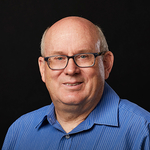LLNL receives four 2023 TCF grants
 (Download Image)
(Download Image)
Lab photonics engineers Allan Chang and Tiziana Bond are shown with a Raman spectroscopy instrument for testing an LLNL-developed hollow-core fiber hydrogen sensor. (Photo: Blaise Douros/LLNL)
Lawrence Livermore National Laboratory (LLNL) researchers have racked up another top-notch year for securing grants through the Department of Energy’s (DOE) Technology Commercialization Fund (TCF) program.
Matt Garrett, who was named earlier this year to lead the Lab’s Innovation and Partnerships Office (IPO), noted that the Lab’s engagements with industry are crucial for moving technologies from the laboratory to the marketplace to benefit the U.S. economy.
“The TCF is an important program that allows national labs and industry to collaborate to mature technologies that address important components of the DOE mission space, including technologies that impact the clean energy transition,” Garrett said. “We are excited and look forward to working with our industry partners to advance these technologies towards commercialization.”
Under this year’s TCF program, LLNL researchers will receive about $1.73 million, with $892,000 from the DOE and $845,000 from the Lab’s IPO and industrial partners. The DOE money is provided through its Office of Technology Transitions.
Hydrogen storage for heavy-duty trucks
Cryo-compressed hydrogen is a promising carbon-free energy carrier for medium- and heavy-duty transportation, particularly for long-haul trucks, and can have advantages over batteries and other hydrogen storage systems in terms of driving range, refueling time and payload capacities.
Researchers from LLNL pioneered cryo-compressed hydrogen storage more than 25 years ago and have been working on improving it and demonstrating its advantages ever since. Most of this past work has been focused on automotive scale systems, but new startup Verne Inc., based in San Francisco, is applying this technology to the medium- and heavy-duty transportation sector.
However, a substantial commercialization barrier exists. To establish and accelerate demonstration pilots, key commercial stakeholders need to better understand the durability and life cycle of cryo-compressed hydrogen storage systems.
Under this TCF project, researchers from LLNL and Verne Inc. will collaborate to develop an accelerated cryo-compressed hydrogen life cycle test methodology and demonstrate the durability of storage systems for heavy-duty trucks.
Led by Nick Killingsworth, a mechanical engineer in the Lab’s Computational Engineering Division, the team will work under a 15-month, $192,000 grant from DOE. Its partner, Verne Inc., will provide $295,000 in matching funds.
New battery could aid grid storage
Rechargeable aqueous zinc-manganese dioxide batteries have attracted increasing attention for grid-scale energy storage compared with other technologies because of cheap raw materials, non-flammability and manufacturability in an open-air environment.
However, the batteries’ inherently low working voltage makes the energy density of these cells too low to accommodate the real need.
A team of LLNL researchers will collaborate with New York-based Urban Electric to develop a high-voltage zinc-manganese dioxide battery with 3D structured anodes based on two Livermore patents.
Under the TCF grant, the key innovation will require taking aqueous battery chemistry with low voltage windows due to water electrolysis and dividing electrolytes into alkaline and acidic components separated by an ion-conducting barrier to double the voltage.
The intermittent nature of renewable resources, including solar or wind, requires grid scale storage systems that can store and release electricity when output mismatches demand. Zinc-manganese dioxide batteries are intrinsically safe and inexpensive.
Headed by Cheng Zhu, a materials scientist in the Materials Engineering Division, the team will conduct its 18-month research effort under a $250,000 TCF grant. Its partner, Urban Electric Power, also will provide $250,000.
Developing a hydrogen sensor for environmental monitoring
A team of Lab researchers is seeking to advance a commercial prototype and validate a fiber-optic sensor for direct detection of hydrogen leakage in the environment based on patented LLNL-developed technology.
Such a sensor would be important for monitoring hydrogen storage tanks or vent stacks associated with stationary fuel cells and for providing early warning of an approaching failure and potential gas leakage.
The sensor approach is based on Raman scattering interrogation within gas-filled hollow-core fibers, so that the location and concentration of the gases would be provided simultaneously via backscattering.
This optical spectroscopy-based technique would overcome current challenges for hydrogen leakage monitoring, as specialized fiber optics will allow direct identification and detection of hydrogen, as well as other gases if needed.
This one-year project is headed by Allan Chang, a photonics engineer in the Materials Engineering Division, and will receive $150,000 from the TCF and $150,000 through LLNL’s IPO. This effort is integral to current work led by LLNL engineer Tiziana Bond's team on photonics spectroscopy.
Empowering self-assembling microgrids
Microgrids have long provided resilience to critical facilities such as hospitals and military installations, and they are now increasingly being looked at as a building block for future grids to support the energy resilience needs of the grid of the future.
In effect, microgrids are energy storage facilities and/or small power generating installations, producing electricity from solar, wind, diesel, hydrogen or oil sources.
Blackstart algorithms, plans that help restart an electrical distribution grid after a blackout, can utilize diesel fuel or renewable distributed energy resources to effectively form microgrids and have been produced by national labs over the years.
Their adoption by the utility industry would be critical to reap the most benefits toward energy and climate resilience, and the pathway is via commercialization of these self-assembling microgrid algorithms by integrating them in a commercial product platform.
Headed by Vaibhav Donde, a power systems engineer in the Lab’s Computational Engineering Division and an associate program leader in Global Security directorate’s E-program, the project is a partnership between LLNL, Los Alamos National Laboratory and New York-based Smarter Grid Solutions. The nine-month effort is funded by a $300,000 TCF grant, $100,000 from the Lab’s IPO and $50,000 from Smarter Grid Solutions.
Contact
 Stephen Wampler
Stephen Wampler
wampler1@llnl.gov
(925) 423-3107
Related Links
"Lab garners five technology commercialization grants,” Oct. 1, 2021Tags
Industry CollaborationsTechnology Transfer
Energy
Science
Featured Articles










